Sweet Betsy, also known as Bloody Butcher, Large Toadshade, or Purple Toadshade, is a distinctive perennial native to the southeastern United States. Belonging to the Melanthiaceae family, this sessile plant is characterized by its unique growth habit, where the flowers emerge directly from its modified leaves rather than on a separate stalk.
The name Trillium cuneatum comes from the Latin word “tres,” highlighting the plant’s striking symmetry—three petals, three bracts, and three sepals. Sweet Betsy thrives in moist, well-drained soil, making it a popular choice for woodland gardens and shaded areas.
With its bold structure and minimal care needs, Sweet Betsy is an excellent addition for gardeners seeking a low-maintenance yet visually appealing native plant.
| Common name | Bloody Butcher, Hugher’s Trillium, Large Toadshade, Little Sweet Betsy, Purple Toadshade, Sweet Betsy |
| Botanical name | Trillium cuneatum |
| Family | Melanthiaceae |
| Species | cuneatum |
| Origin | Southeastern United States |
| Life cycle | Perennial |
| Plant type | Herbaceous Perennial |
| Hardiness zone | 5, 6, 7, 8 |
| Sunlight | Deep shade |
| Maintenance | Low |
| Soil condition | High Organic Matter |
| Soil ph | Acid |
| Drainage | Well-Drained |
| Growth rate | Slow |
| Spacing | Less than 12 in. |
| Harvest time | Spring |
| Flowering period | Spring |
| Height | 1 ft. – 1 ft. 6 in. |
| Flower color | Gold, Yellow |
| Leaf color | Green |
| Fruit color | Green |
| Stem color | Green |
| Fruit type | Berry |
| Leaf benefit | Showy |
| Flower benefit | Fragrant |
| Garden style | Native Garden |
| Uses | Naturalized Area |
I. Appearance and Characteristics
Trillium cuneatum, the little sweet betsy, also known as whip-poor-will flower, large toadshade, purple toadshade, and bloody butcher, is a species of flowering plant in the family Melanthiaceae. It is a member of the Trillium cuneatum complex, a subgroup of the sessile-flowered trilliums. It is native to the southeastern United States but is especially common in a region that extends from southern Kentucky through central Tennessee to northern Alabama. In its native habitat, this perennial plant flowers from early March to late April (depending on latitude). It is the largest of the eastern sessile-flowered trilliums.
Trillium cuneatum is a member of the Trillium cuneatum complex, along with its closest relatives, Trillium luteum and Trillium maculatum. Trillium cuneatum is paraphyletic and morphologically variable. Some populations currently considered to be T. cuneatum are more closely related to T. maculatum than to other T. cuneatum populations. It may be split in the future into several monophyletic species with greater morphological uniformity. All members of the complex are sessile-flowered trilliums.
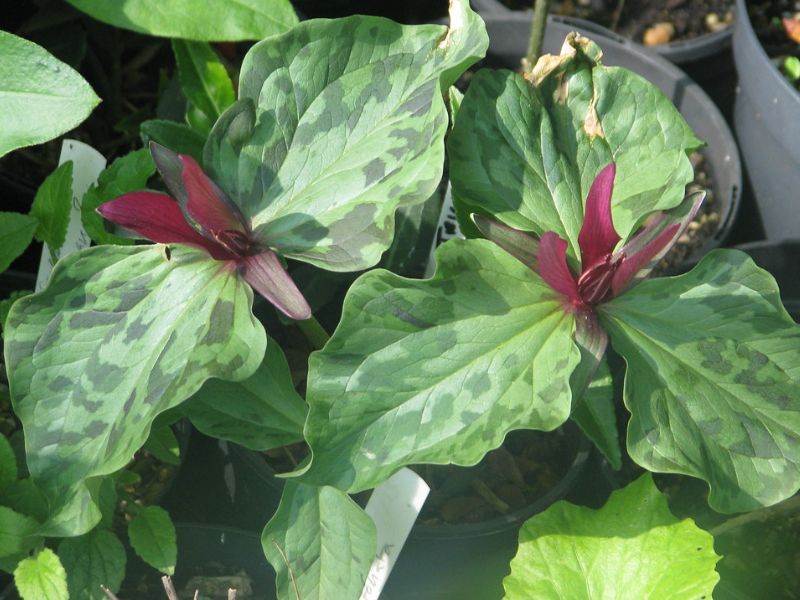
Trillium cuneatum is a perennial, herbaceous, flowering plant that persists by means of an underground rhizome. Like all trilliums, it has a whorl of three bracts (leaves) and a single trimerous flower with three sepals, three petals, two whorls of three stamens each, and three carpels (fused into a single ovary with three stigmas). It has a sessile flower (no flower stalk), erect petals, and mottled leaves. The broad leaves surround a banana-scented flower with maroon, bronze, green, or yellow petals. It is known for its morphological variability between (and even within) geographically distributed populations.
In the southern part of its range, from Mississippi to Georgia, Trillium cuneatum begins to flower in early March, with peak flowering occurring around mid-March. In its northernmost populations, flowering occurs in April. In the vicinity of Nashville, Tennessee, fruits were observed to ripen and drop off between July 1 and July 10.
In general, Trillium species are myrmecochorous, that is, ants facilitate seed dispersal in most (if not all) species. Since each seed of T. cuneatum has an attached elaiosome, presumably its seeds are dispersed by ants as well.
Sweet Betsy, like all Trilliums, is a toxic plant. Reports on its level of toxicity vary, but most sources agree on the following: the dangerous element is saponins, which are concentrated in the roots and berries. Eating either can cause nausea, vomiting, stomach pain, and diarrhea. Keep children away from sweet Betsy, and if you have small children, fence it off or remove it from your garden.
II. How to Grow and Care
Sunlight
In nature, sweet Betsy grows on forest floors, in valleys, or in rock cracks in middle- and high-altitude areas. It is a shade-loving plant. When grown in a garden, it needs a shaded environment, such as under trees or on the shady side of buildings to avoid harsh, direct sunlight. Blazing light exposure can cause it to wither.
Temperature
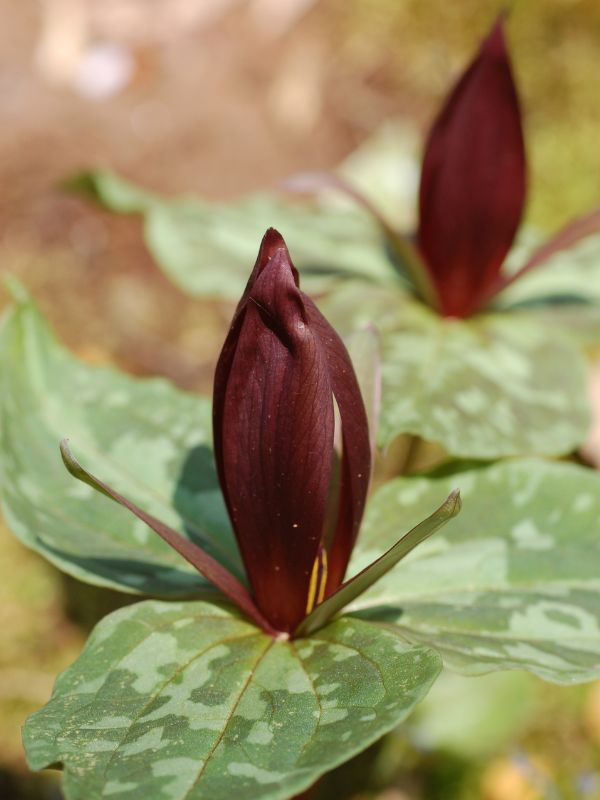
Sweet Betsy originates from North America and East Asia and like cool, moist habitats. It grows well in an environment with a temperature range of 8 to 12 ℃ and doesn’t tolerate high temperatures. It likes moisture and is not drought-resistant, and it prefers air humidity at 75% – 90%.
Watering
Native to the understory of deciduous forests, sweet Betsy thrives in conditions that mimic its natural habitat’s moist soil and dappled sunlight. It exhibits a preference for consistent moisture without being waterlogged, indicative of its resilience to moderate dry spells. Regular watering every week will maintain its health and vigor. As an herbaceous perennial commonly grown outdoors, sweet Betsy benefits significantly from mulching which helps retain soil moisture and stabilizes temperature – key factors during its active growing season.
Soil
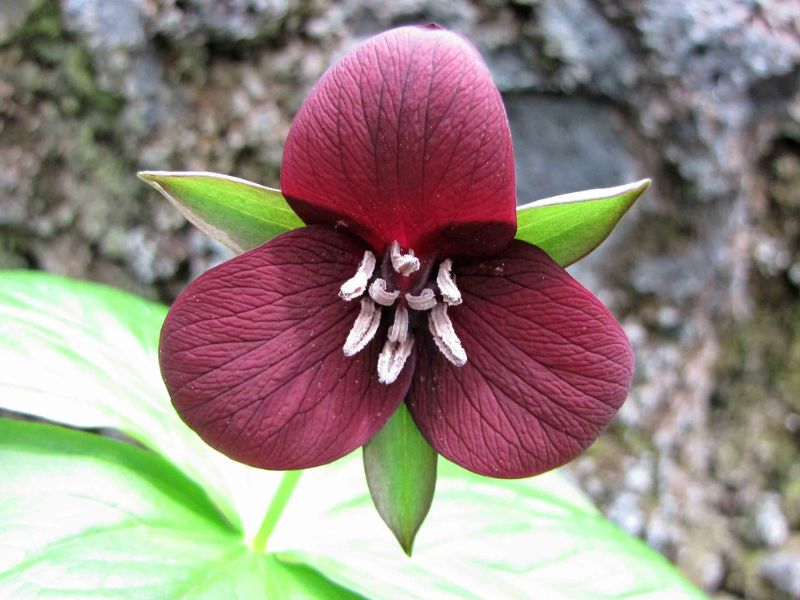
Sweet Betsy likes loose, fertile, moist, slightly acidic soil with good drainage. The ideal pH value range is 5.0-6.5, and shouldn’t exceed 7.3. If the soil is barren or has poor air permeability, you can improve it by mixing in a small amount of organic fertilizer.
Fertilizing
For sweet Betsy, utilize a balanced fertilizer to encourage robust growth and flowering. Apply a granular or liquid type designed for woodland perennials at the onset of spring growth, and again if needed during active growth, adhering to dosage instructions. Note that over-fertilization can harm sweet Betsy, so less is more. Seasonal adjustments are key; fertilize sparingly post-blooming for sustained health. Always water soil post-fertilization to aid nutrient absorption and protect roots.
Propagation
Sweet Betsy can propagate by sowing, but it takes 5-7 years after sowing for the plant to bloom. It can also propagate by plant division, which is usually performed after the flowering season. Carefully dig up its roots and divide the rhizome with a sharp knife, retaining at least 2 buds on each part. Bury these rhizomes back in the soil about 6 cm deep, and plant them 25 cm apart from one another. Plant division can quickly produce bloom-ready plants, but can also potentially cause the plants to die. Therefore, caution is advised in carrying out this method.
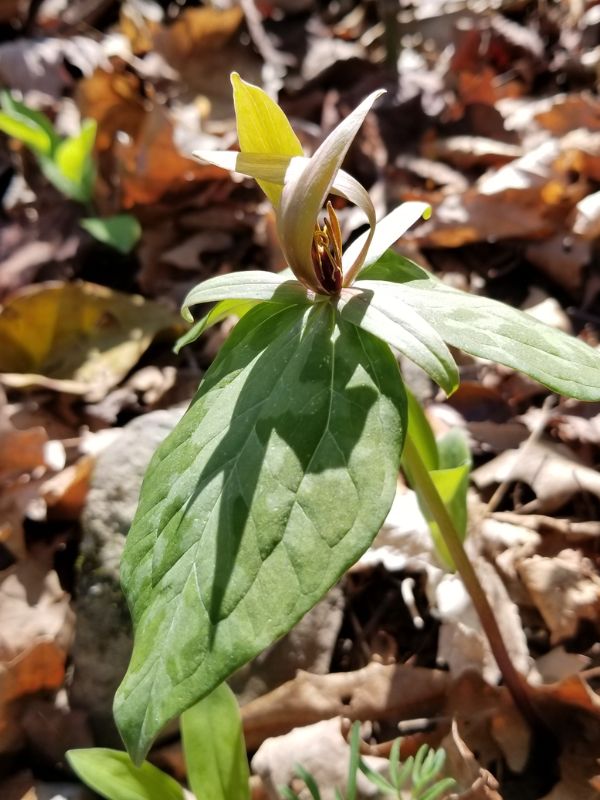
Transplanting
The ideal season to transplant sweet Betsy is between mid-spring and late spring, as this is when its root system can establish well. Choose a shaded or partly shaded location that’s rich in organic matter. Gently loosen the surrounding soil for successful transplantation. Happy planting!
Repotting
For sweet Betsy, repotting every 2-3 years is ideal, aligning with its slow-growing nature. Spring, post-dormancy, is the optimal time to minimize stress. Choose a modest-sized pot to accommodate root growth. Post-repotting, ensure moist, well-draining soil and partial shade for recovery. Remember, sweet Betsy thrives in stable conditions, so gentle handling during this process is key.
III. Harvesting and Storage
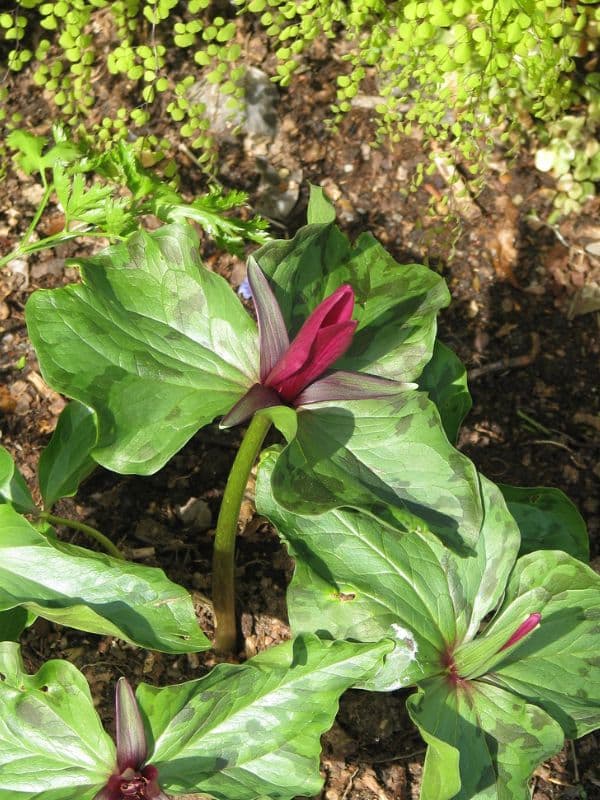
10-14 weeks after sweet Betsy blooms, when the fruits turn brown, it’s time to harvest the seeds for sowing. Pick the fruits off the plant, squeeze lightly to crack them open, and find the ripe brown seeds inside. The seeds can be sown right away or placed in moist peat soil for refrigerated storage.
Find Where to Buy the Best Little Sweet Betsy (Trillium cuneatum)







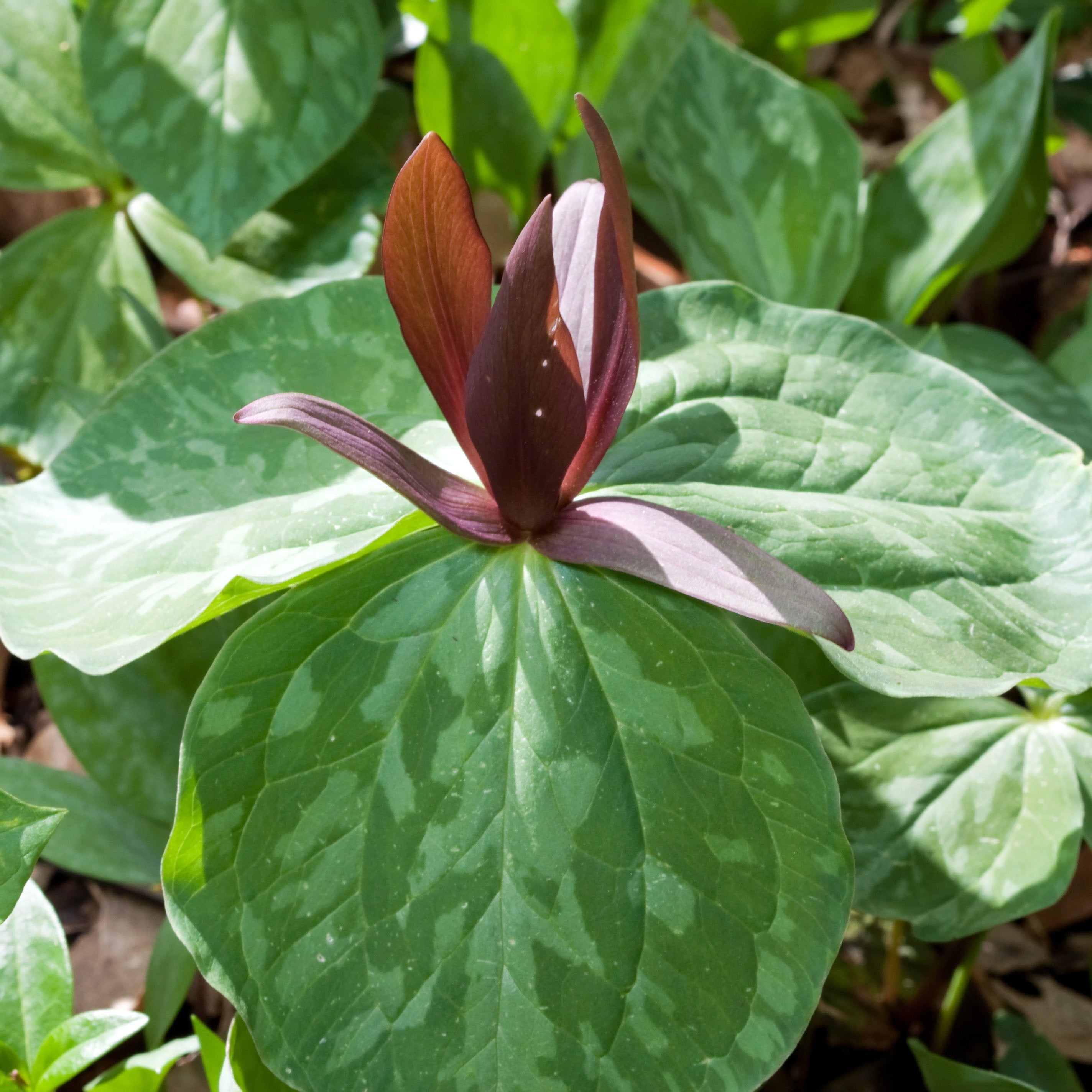










Leave a Reply